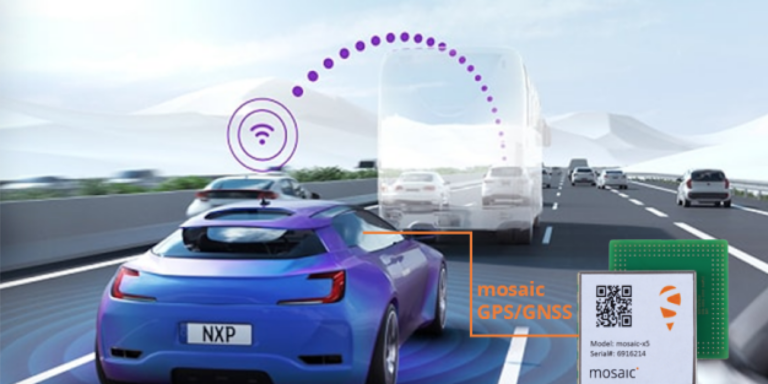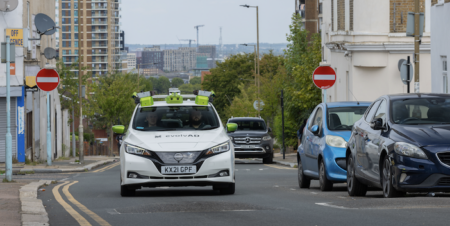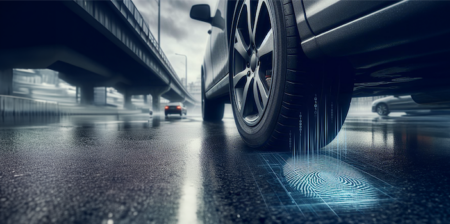NXP, a developer of communication technology for embedded applications, is integrating Septentrio GNSS technology into its V2X (vehicle-to-everything) reference design and development boards. Septentrio develops high-accuracy GNSS positioning systems, and is providing its Mosaic technology for the deal, a multi-frequency, multi-constellation GNSS receiver module designed to deliver accurate and reliable global localisation.
V2X technology enables cars to communicate with infrastructure as well as other vehicles, enables cars to ‘see’ what’s around the corner or through a dense urban environment, warning the driver about road works, traffic congestion and emergency vehicles. Precise GNSS-assisted localisation combined with V2X communication enables a variety of ADAS functionality such as automatic braking if slowing traffic is detected ahead, or truck platooning.
Mosaic is a compact high-accuracy GNSS receiver module, which will be integrated into NXP’s V2X development boards. Multi-frequency multi-constellation technology gives the system access to every possible signal from all available GNSS constellations including the US GPS, European Galileo, Russian GLONASS, Chinese BeiDou and Japanese QZSS satellites. Septentrio’s algorithms exploit this signal diversity to deliver maximum positioning availability even in difficult environments such as under foliage or in urban areas.
Inside a vehicle, GPS signals can become ‘jammed’ by electronics in close proximity or illegal devices called ‘jammers’, which are used by some drivers to avoid road tolling. Mosaic uses jamming-resistant signal processing, making it robust against interference and suitable for safety-critical applications such as ADAS and autonomous navigation.





